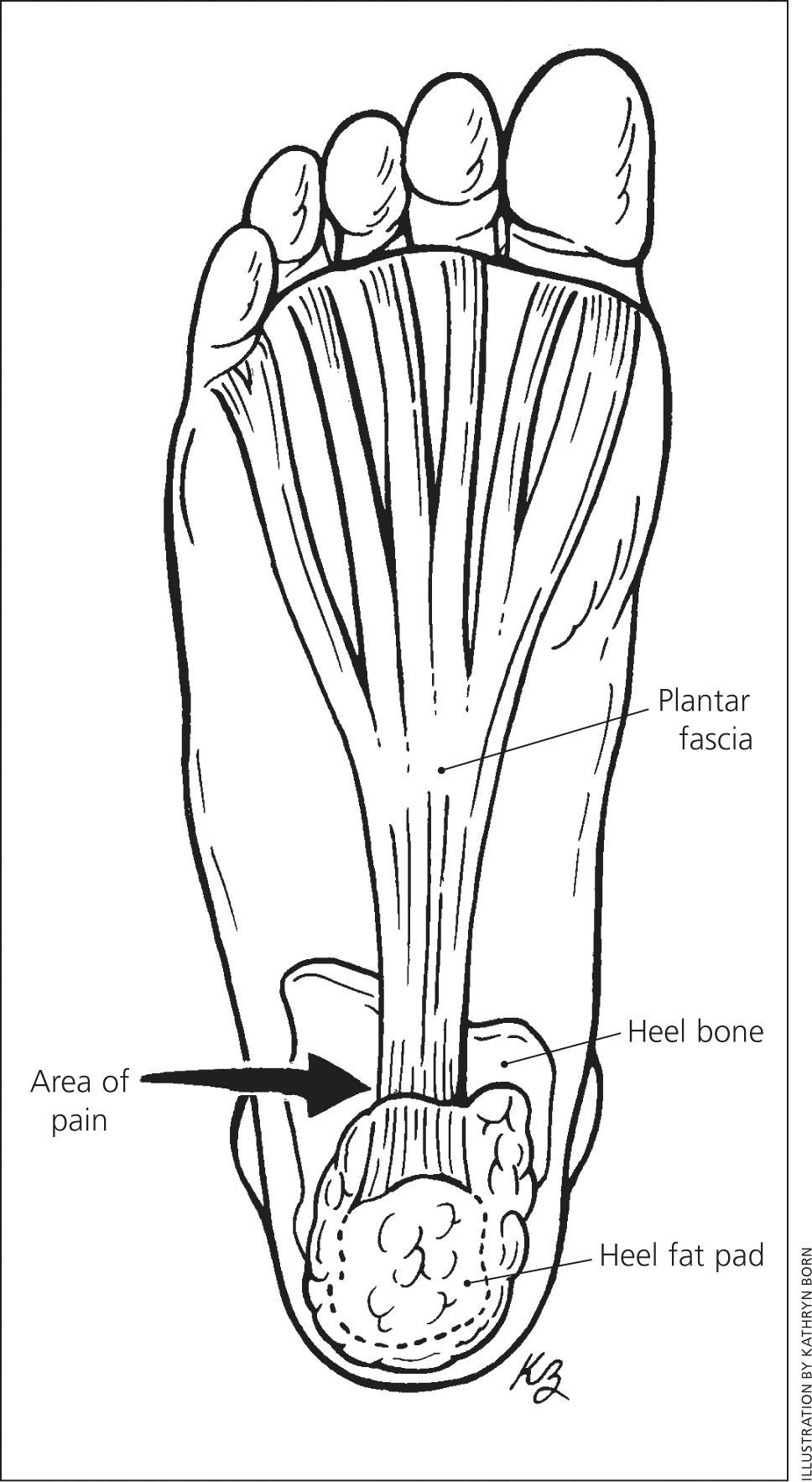
Am Fam Physician. 2011;84(6):686-687
See related article on plantar fasciitis.
What is plantar fasciitis?
Plantar fasciitis (PLANT-tar fash-ee-EYE-tis) is pain or swelling of the plantar fascia. The plantar fascia is a tough band of tissue that attaches to the heel bone and supports the arch of your foot (see drawing).

How do I know if I have it?
Plantar fasciitis is a common cause of heel pain. The pain feels sharp and stabbing, especially when getting out of bed in the morning or walking after sitting for a long time. You may also have swelling, redness, or aching in your heel.
What causes it?
Plantar fasciitis is caused by increased pulling and stress on the plantar fascia. People who are overweight, don't get much exercise, have diabetes, stand for long periods of time, have a high or flat foot arch, or have tightness in their leg muscles are more likely to get it. However, anyone can get plantar fasciitis.
What can I do to help the pain?
If you are active or stand a lot, try resting your feet. Wearing comfortable shoes may also help. Your doctor may have you wear heel cups or arch supports in your shoes, which can help take pressure off your heel and support your foot arch.
Another option is to ice your heel. For example, use a frozen water bottle to roll under your foot or put a bag of frozen corn on your heel for 10 to 15 minutes in the morning, afternoon, and evening. Medicines, such as acetaminophen (one brand: Tylenol) or ibuprofen (one brand: Motrin), may also help, but talk to your doctor before taking them. If you are overweight, your doctor can help you to lose weight and start exercising.
Will stretching help?
Daily stretches can help with pain and tightness in your foot and calf area. The following stretches can be done several times a day, especially in the morning when you get out of bed.
Towel stretch: In the morning, before standing up, wrap a towel around the ball of your foot and pull it toward your head. This will stretch your foot and the plantar fascia. Hold the stretch for 15 seconds and release. Perform this stretch on your other foot and repeat five times before standing up.
Wall stretch: Stand straight up with your hands in front of you on the wall. Place your injured foot about 12 inches behind your other leg. Keeping your heels on the ground and knees slightly bent, lean your body toward the wall. You should feel a stretch in your calf and foot. Hold the stretch for 15 seconds and release. Repeat this stretch five times.
Step stretch: While holding onto a stair railing, place both feet on a step. Slowly move your heels off the edge of the step. When just the balls of your feet are remaining on the step, lower your heels off the step. Hold the stretch for 15 seconds and release. Repeat this stretch five times, relaxing for 10 seconds between stretches.
Stretching Exercises for Plantar Fasciitis
Courtesy of Summa Health System, Akron, Ohio.
What if these treatments don't help?
Talk to your doctor. Other treatment options include a splint you can wear overnight, physical therapy, or a corticosteroid shot into your heel.
